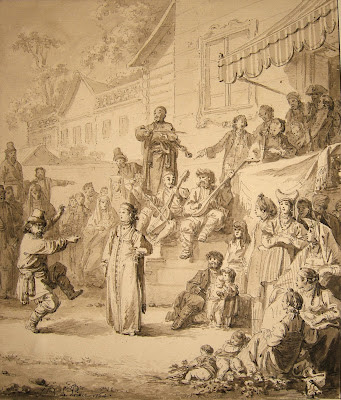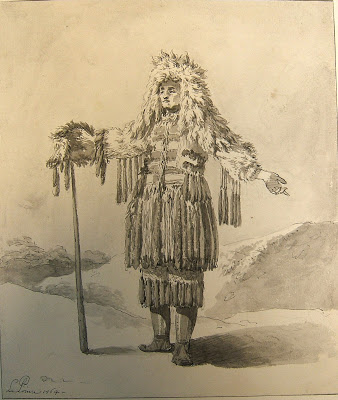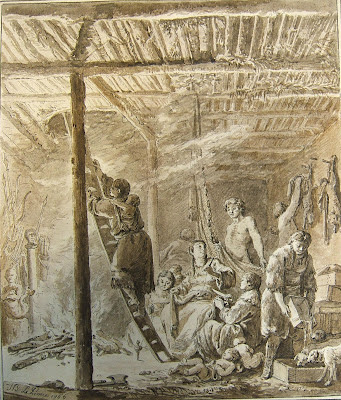Next Tuesday evening, there will be a transit of Venus, visible beginning around 6 PM (at least for those of us here in Philly). A transit of Venus means that Venus will pass between the earth and the sun and will be visible as a black dot moving across the sun. These transits are rare, occurring in pairs, over a century apart. The next transit after Tuesday won’t be for another 105 years.
Apart from being rare, the transit of Venus has also been historically useful in determining the size of the solar system. In 1716 Edmund Halley suggested that by timing the transit of Venus from different points on earth at different latitudes, observers could work out the solar parallax–the apparent difference in position of the sun from these locations. This would allow them to calculate the distance between the sun and the earth–for more on the science behind this calculation see this helpful page, or this page from NASA.
During the 1761 and 1769 transits, scientist set out on voyages around the globe to take the measurements Halley had suggested. One of these scientists was the French priest Jean-Baptiste Chappe d’Auteroche, who travelled to Tobolsk, Siberia for the 1761 transit. His account of the trip was later published as Voyage en Siberie and illustrated with plates by Jean Baptiste Le Prince and Moreau le Jeune. Le Prince had not traveled with Auteroche, but he had separately lived in Russia for five years between 1758 and 1763. In addition to a copy of the book, the Rosenbach also owns the original
watercolor illustrations, which depict native peoples and scenes of
life in Russia.
 |
| Jean-Baptiste Le Prince, Danse Russe. 1764. 1954.0387 |
 |
| Jean-Baptiste Le Prince, Kamtchadal dans son Habit De Ceremonie. 1764. 1954.402 |
 |
| Jean-Baptiste Le Prince, Iourte ou Habitation Souterraine des Kamtchadals Pendant L’Hiver. 1766. 1954.397 |
You can find more of the lovely illustrations in our online object catalog.
Jean-Baptiste Chappe d’Auteroche travelled to the Baja California peninsula for the 1769 transit, but although he made his observations he died there in an epidemic; only one member of his crew made it back to Paris with his notes.
If you would like to learn more about the transit of Venus, and how to observe it for yourself next Tuesday, either outside or via webcast, you can check out transitofvenus.org. Remember to never look at the sun with your naked eye–it can cause serious damage.

